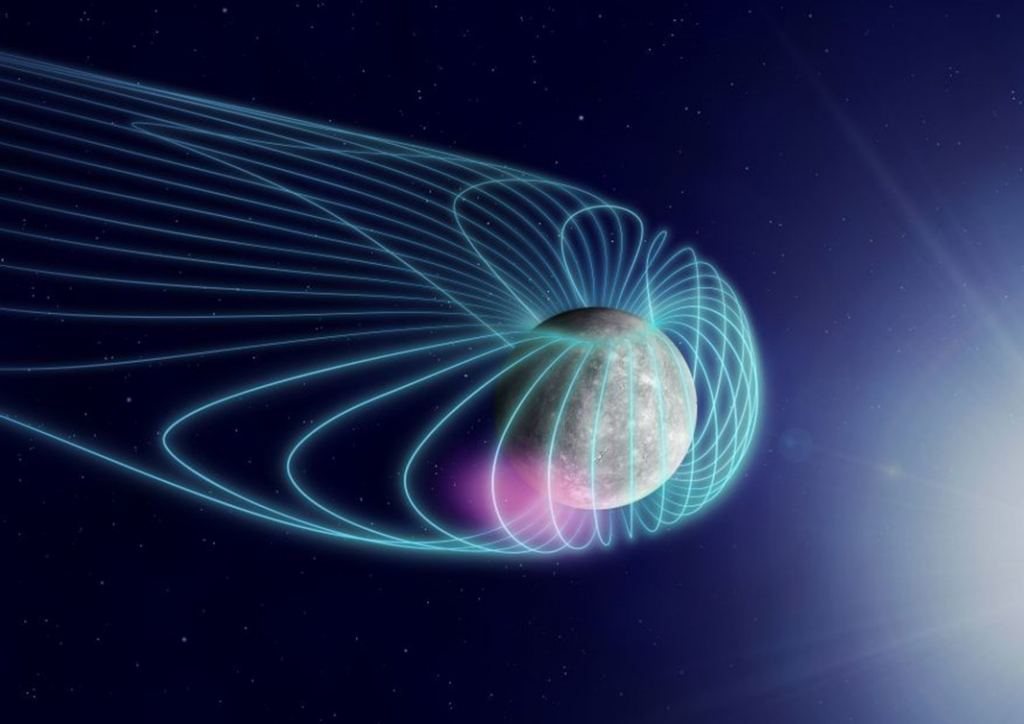Mercury is the closest planet to our Sun, ranging from 46 million km (28. 58 million mi) at perihelion to 69. 82 million km (43.
38 million mi) at aphelion. Because of its proximity, Mercury is strongly influenced by the steam of plasma constantly flowing from the Sun to the edge of the Solar System (aka. solar wind).
Beginning with the Mariner 10 mission in 1974, robotic explorers have been sent to Mercury to measure how solar wind interacts with Mercury’s magnetic field to produce whistler-mode chorus waves – natural radio emissions that play a key role in electron acceleration in planetary magnetospheres. In addition to being the cause of geomagnetic storms and auroras in planetary atmospheres, these waves also lead to electromagnetic vibrations at the same frequencies as sound, producing chirps and whistles. In a recent study, an international research team consulted data from the BepiColombo International Mercury Exploration Project, which gathered data on Mercury’s magnetosphere during its first and second flyby.
Their results are the first direct probing of chorus waves in Mercury’s dawn sector, which showed evidence of possible background variations in magnetic field. The team was led by Mitsunori Ozaki, an associate professor at the Graduate School of Natural Science and Technology at Kanazawa University. He was joined by astrophysicists from the Research Institute for Sustainable Humanosphere (RISH) at Kyoto University, the MagneDesign Corporation, the Laboratoire de Physique des Plasmas (LPP) at the Sorbonne’s École Polytechnique, and the Institute of Space and Astronautical Science at the Japan Aerospace Exploration Agency (JAXA).
The team’s paper, “Whistler-mode waves in Mercury’s magnetosphere observed by BepiColombo/Mio,” was recently published in Nature Astronomy. Artist’s impression of the European Space Agency’s BepiColombo mission in operation around Mercury. Credit: Astrium When Mariner 10 reached Mercury in 1974, scientists learned for the first time that, similar to Earth, Mercury had a planetary magnetic field and (hence) a magnetosphere.
Between 2008 and 2015, NASA’s MErcury Surface, Space ENvironment, GEochemistry, and Ranging (MESSENGER) spacecraft provided a detailed picture of Mercury’s magnetic field and magnetosphere. However, neither mission could observe chorus waves in the planet’s magnetosphere due to the lack of proper instruments and the harsh nature of Mercury’s electromagnetic environment. Since electromagnetic waves can efficiently accelerate plasma particles, scientists have been hoping to get a closer look at Mercury to measure the effect these waves have on its magnetospheric dynamics.
This research is currently being conducted by the Mercury Magnetospheric Orbiter (MIO), a probe accompanying the joint ESA/JAXA BepiColombo mission. The MIO spacecraft was launched on October 20th, 2018, and is currently on its way to Mercury with an orbital insertion scheduled for December 2025 after several flybys with Earth, Venus, and Mercury (for gravity-assist maneuvers). MIO has conducted two flybys of Mercury so far, the first on October 1st, 2021, and again on June 23rd, 2022, that brought it to within 200 km (124 mi) of the surface.
Unlike previous missions, the MIO spacecraft – operated by JAXA – is equipped with a full suite of plasma wave instruments designed specifically for investigating the electromagnetic environment around Mercury. In addition, the MIO spacecraft was designed to lower its electromagnetic noise level as much as possible. The alternating current magnetic field sensors developed by JAXA and the LPP were designed to operate in the extreme environment of Mercury.
These allowed the spacecraft to make the first electromagnetic wave observations around Mercury without being contaminated by the noise from the spacecraft itself. These revealed the local generation of chorus waves, which confirmed predictions regarding their frequency range, intensity, etc. , made since the 2000s when the MIO spacecraft’s plasma wave instrument (PWI) was designed.
During the two flybys, the spacecraft found a ”spatial locality” of the chorus waves restricted to an extremely limited region in the dawn sector of the Mercury’s magnetosphere, implying the existence of a physical mechanism confined to this region. Plot showing the magnitude of the magnetic field of Mercury from data obtained during the first flyby of the MESSENGER probe in 2008. Credit: NASA/JHUAPL To investigate the cause of these waves, the team used the nonlinear growth theory of chorus waves established by Prof.
Omura of Kyoto University (a co-author on the paper). This allowed them to evaluate the effect of the curvature of Mercury’s magnetic field, which revealed that it is strongly distorted by solar wind. This was apparent in how the magnetic field lines in the night sector are stretched by the solar wind pressure while being less affected in the dawn sector – resulting in a smaller curvature.
This means that energy is efficiently transferred from electrons to electromagnetic waves in the dawn sector, leading to conditions that favor chorus waves. These results will significantly impact planetary scientists’ understanding of Mercury’s environment. These results demonstrate the importance of planetary magnetic field lines (which are strongly affected by solar wind) on the locality of chorus wave generation.
They also demonstrate how chorus waves could efficiently accelerate electrons in Mercury’s magnetosphere and how their precipitation could lead to X-ray aurorae. Their findings also predict the kinds of observations the MIO spacecraft will carry out once it establishes orbit around Mercury. As the team indicated in a Kanazawa University press release: “Based on flyby observations, we have found that magnetic field distortion is responsible for the local (i.
e. dawn sector) generation of the chorus waves. The comprehensive exploration of the electromagnetic environment by the Mio spacecraft in Mercury’s orbit will contribute not only to understanding the plasma environment of the entire Mercury’s magnetosphere but also to a deep understanding of the magnetospheric dynamics in general.
The magnetosphere acts as a barrier preventing life-threatening cosmic radiations on the planets of the solar system. Comparison of data from Mercury and Earth will strengthen our understanding of this important natural shielding of our home planet. ” Further Reading: Kanazawa University, Nature Astronomy The post The Solar Wind Whistles as it Passes Mercury appeared first on Universe Today.
.
From: universetoday
URL: https://www.universetoday.com/163710/the-solar-wind-whistles-as-it-passes-mercury/



